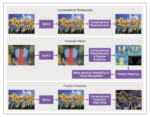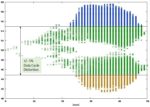We’re getting close to the annual July Design Automation Conference (DAC) in San Francisco, and every year I like to make the rounds of the exhibitors beforehand and see what’s new. When I checked with AMIQ EDA, I found that this is a big year for them. Their parent company AMIQ just reached its 20th anniversary, and they’ll be celebrating… Read More
Electronic Design Automation
Visit with Agnisys at DAC 2023 in San Francisco July 10-12
I’d like to extend an invitation to you and your development team to visit with Agnisys in our booth, #2512, at this week’s Design Automation Conference (DAC) 2023, Monday, July 10-12.
In its 60th year, DAC is recognized as the premier event for the design and design automation of electronic chips to systems, so you can count on team… Read More
Defacto Celebrates 20th Anniversary @ DAC 2023!
Defacto Technologies is a company that specializes in Electronic Design Automation (EDA) software and solutions. Defacto offers a range of EDA software solutions that help streamline and optimize various stages of the front-end design process. Their tools focus on chip design assembly and integration before logic synthesis
Computational Imaging Craves System-Level Design and Simulation Tools to Leverage AI in Embedded Vision
Aberration-free optics are bulky and expensive. Thanks to high-performance AI-enabled processors and GPUs with abundant processing capabilities, image quality nowadays relies more on high computing power tied to miniaturized optics and sensors. Computational imaging is the new trend in imaging and relies on the fusion … Read More
Is Your RTL and Netlist Ready for DFT?
I recall an early custom IC designed at Wang Labs in the 1980s without any DFT logic like scan chains, then I was confronted by Prabhu Goel about the merits of DFT, and so my journey on DFT began in earnest. I learned about ATPG at Silicon Compilers and Viewlogic, then observability at CrossCheck where I met Jennifer Scher, now she’s… Read More
Better Randomizing Constrained Random. Innovation in Verification
Constrained random methods in simulation are universally popular, still can the method be improved? Paul Cunningham (Senior VP/GM, Verification at Cadence), Raúl Camposano (Silicon Catalyst, entrepreneur, former Synopsys CTO and now Silvaco CTO) and I continue our series on research ideas. As always, feedback welcome.… Read More
Clock Verification for Mobile SoCs
The relentless advancement of mobile phone technology continues to push boundaries, demanding SoCs that deliver ever-increasing performance while preserving extensive battery life. To meet these demands, the industry is progressively embracing lower technology nodes with current designs being taped-out at 5nm or below.… Read More
Keysight at #60DAC
Keysight EDA will have a large presence at this year’s DAC in San Francisco July 9-13. For a better understanding of what’s happening with Keysight EDA at DAC I talked to my contacts to learn that they have three main messages this year:
Demos: Booth 1531
You may recall that Keysight acquired Cliosoft… Read More
Transforming the electronics ecosystem with the component digital thread
The transformation of the vertically integrated electronics value chain to a disaggregated supply chain has brought tremendous value to the electronics industry and benefits to the consumers. This transformation has driven the various players to become highly specialized in order to support the market trends and demands … Read More
Ansys Revving up for Automotive and 3D-IC Multiphysics Signoff at DAC 2023
Highlights:
- Ansys CTO Prith Banerjee will be delivering the Visionary Speaker opening address on Tuesday 11th
- There will be technical presentations every hour in the Ansys Booth Theater (#1539)
- Get yourself a complimentary sit-down breakfast and a discussion on automotive electronics by registering for the Ansys DAC










Quantum Computing Technologies and Challenges